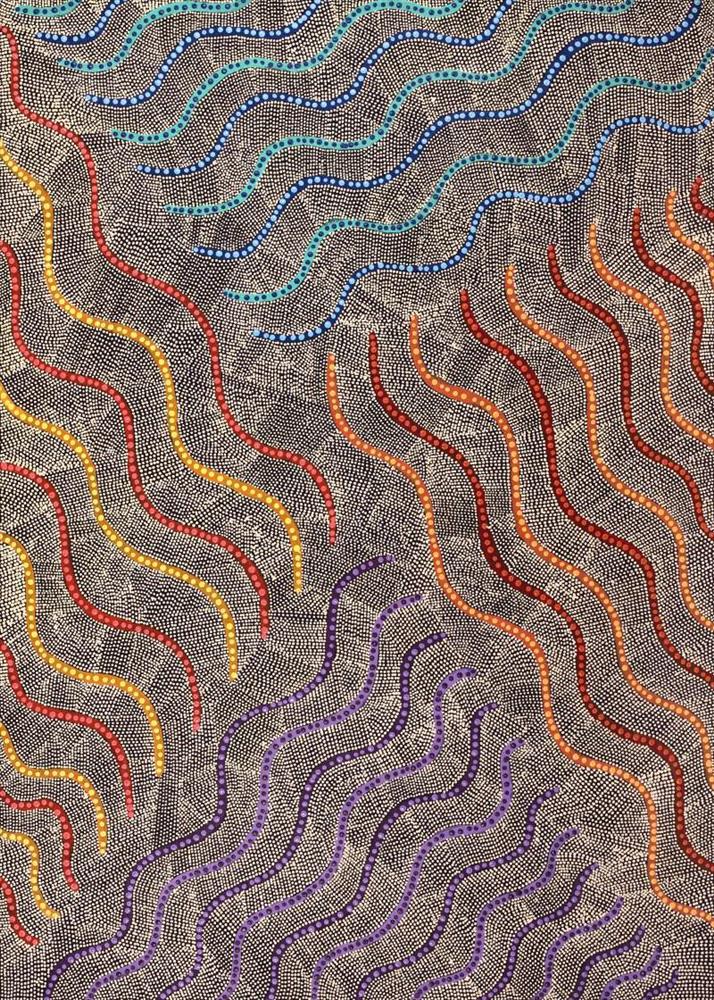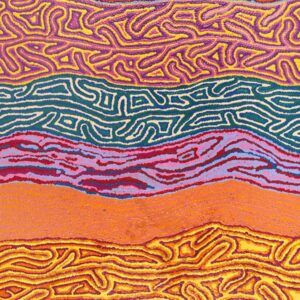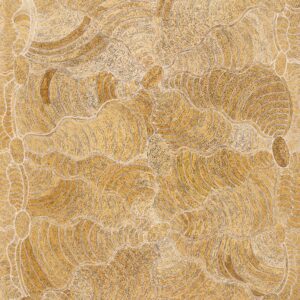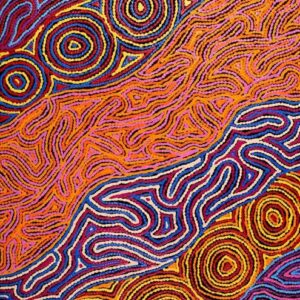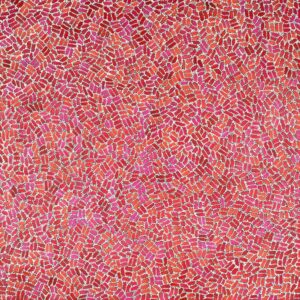Your cart is currently empty!
Shop
Water Dreaming
€950.00
Cat#: 10332
Ngapa Jukurrpa (Water Dreaming) – Puyurru
107 x 76 cm
The site depicted in this painting is Puyurru, west of Yuendumu. In the
usually dry creek beds are ‘mulju’ (soakages), or naturally occurring
wells. The ‘kirda’ (owners) for this site are Nangala/Nampijinpa women
and Jangala/Jampijinpa men. Two Jangala men, rainmakers, sang the
rain, unleashing a giant storm. The storm travelled across the country
from the east to the west, initially travelling with a ‘pamapardu Jukurrpa’
(termite Dreaming) from Warntungurru to Warlura, a waterhole 8 miles
east of Yuendumu. At Warlura, a gecko called Yumariyumari blew the
storm on to Lapurrukurra and Wilpiri. Bolts of lightning shot out at Wirnpa
(also called Mardinymardinypa) and at Kanaralji. At this point the
Dreaming track also includes the ‘kurdukurdu mangkurdu Jukurrpa’
(children of the clouds Dreaming). The water Dreaming built hills at
Ngamangama using baby clouds and also stuck long pointy clouds into
the ground at Jukajuka, where they can still be seen today as rock
formations.
The termite Dreaming eventually continued west to Nyirripi, a community
approximately 160 km west of Yuendumu. The water Dreaming then
travelled from the south over Mikanji, a watercourse with soakages
northwest of Yuendumu. At Mikanji, the storm was picked up by a
‘kirrkarlanji’ (brown falcon [Falco berigora]) and taken farther north. At
Puyurru, the falcon dug up a giant ‘warnayarra’ (rainbow serpent). The
serpent carried water with it to create another large lake, Jillyiumpa,
close to an outstation in this country. The ‘kirda’ (owners) of this story
are Jangala men and Nangala women. After stopping at Puyurru, the
water Dreaming travelled on through other locations including
Yalyarilalku, Mikilyparnta, Katalpi, Lungkardajarra, Jirawarnpa, Kamira,
Yurrunjuku, and Jikaya before moving on into Gurindji country to the
north.
In contemporary Warlpiri paintings, traditional iconography is used to
represent the ‘Jukurrpa’ (Dreaming). Short dashes are often used to
represent ‘mangkurdu’ ( cumulus & stratocumulus clouds), and longer,
flowing lines represent ‘ngawarra’ (flood waters). Small circles are used
to depict ‘mulju’ (soakages) and river bed.


